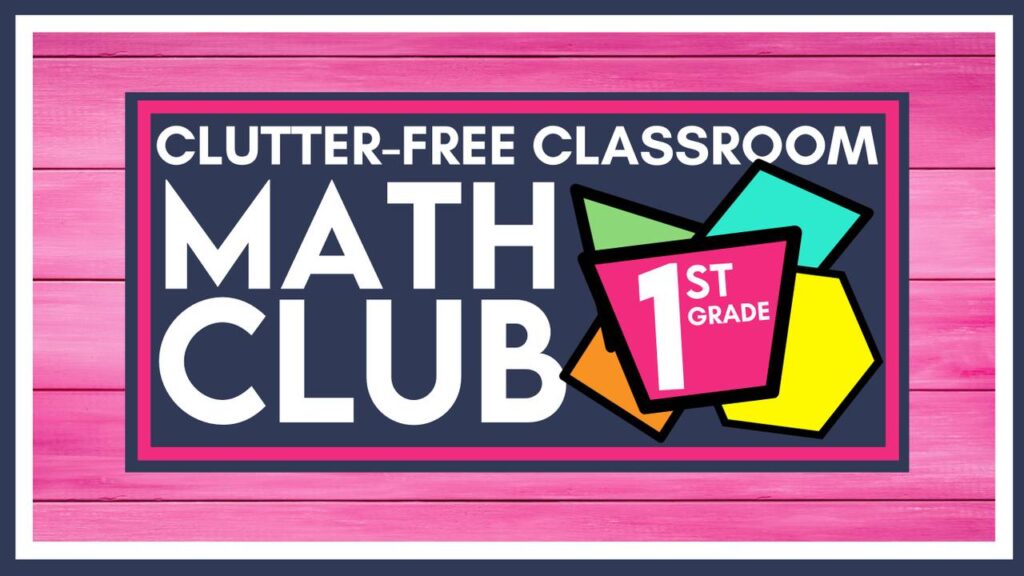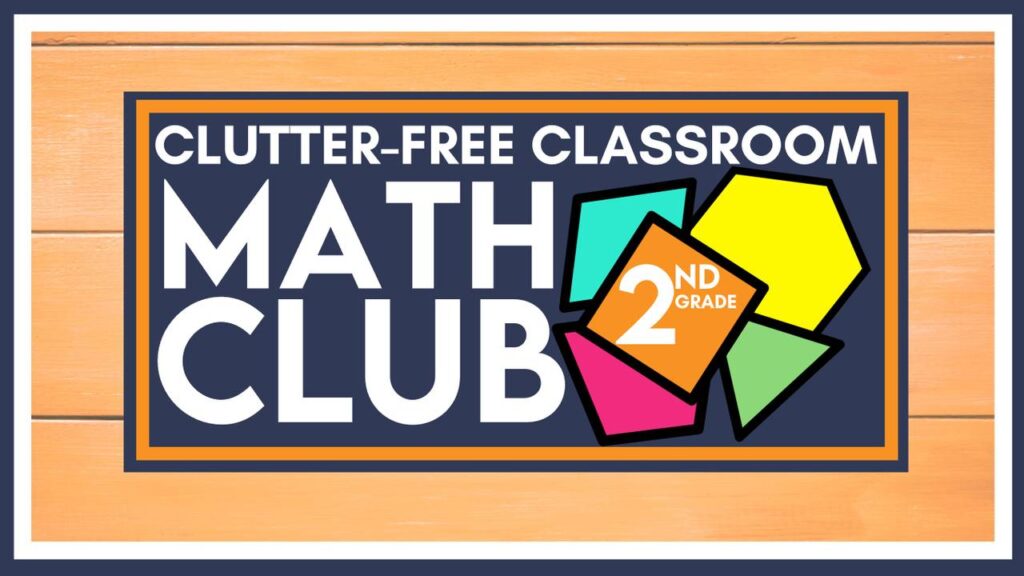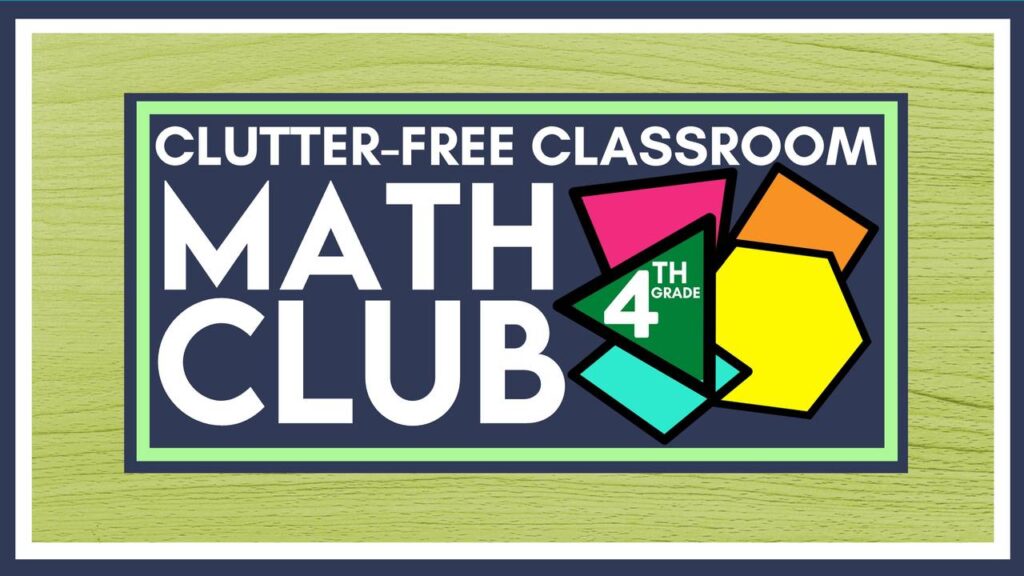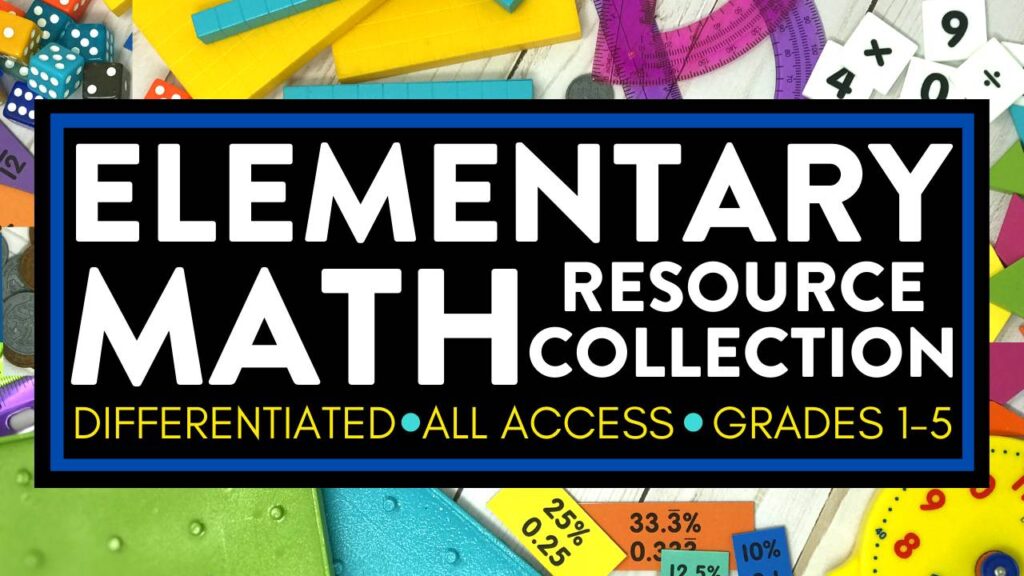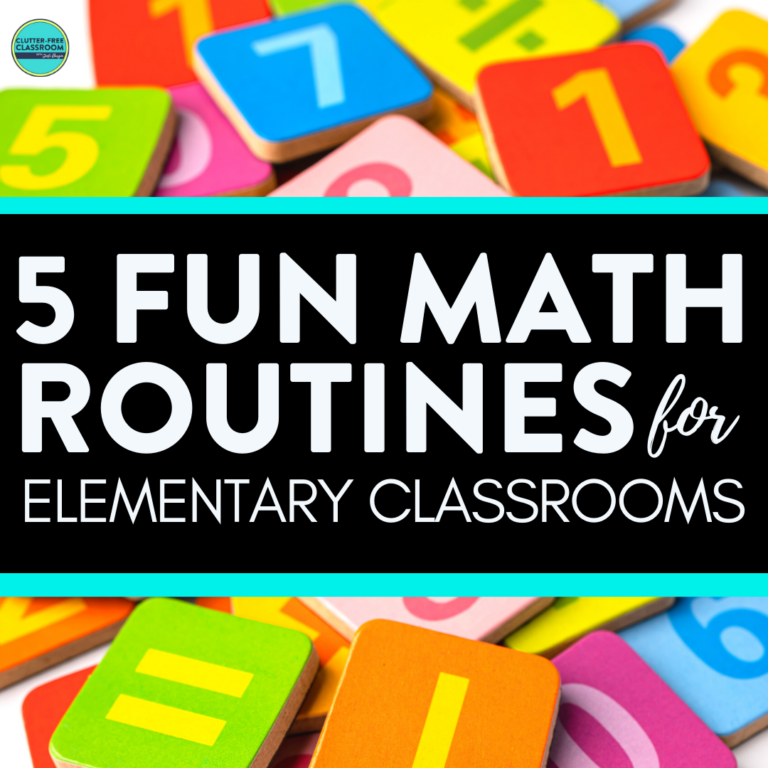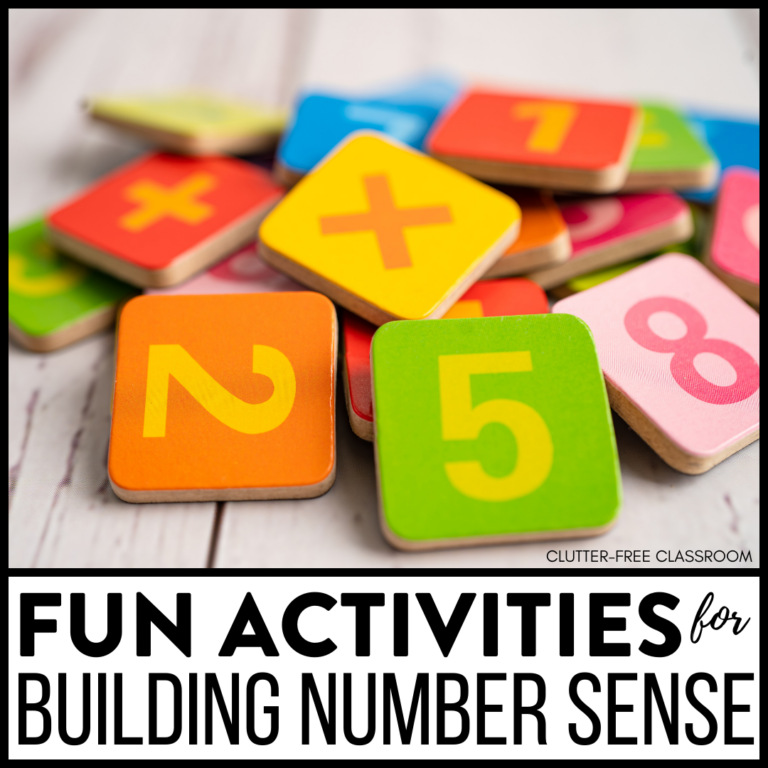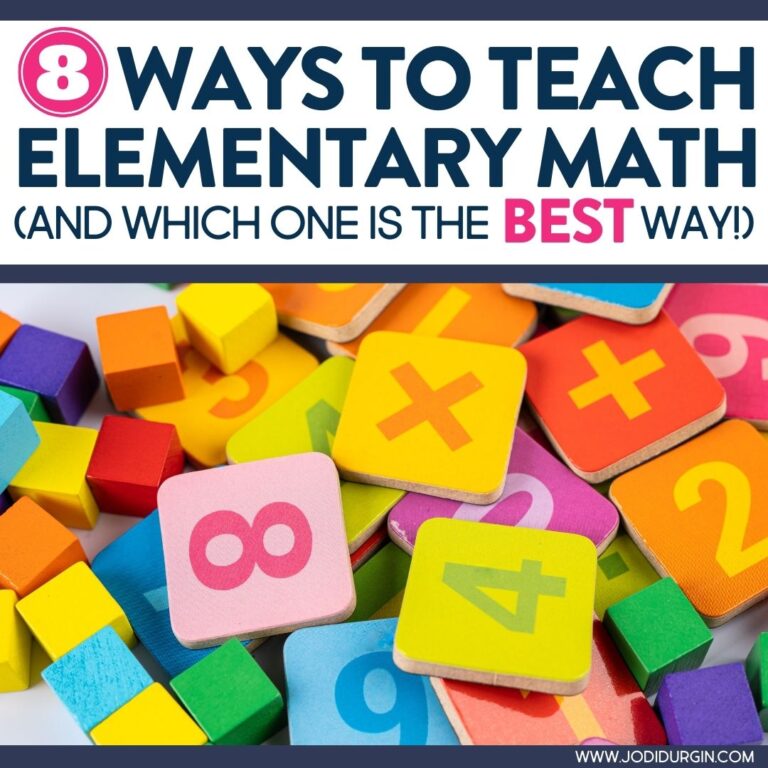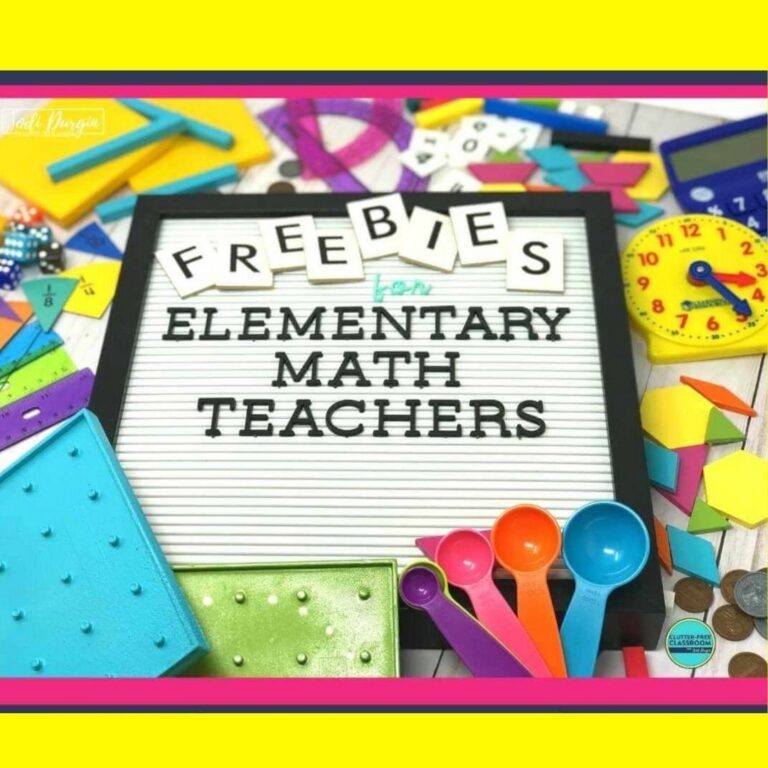Creating a classroom environment that equips elementary students with the tools (like math posters) and resources they need to be successful, independent learners is one of the most important jobs we have as teachers. As we design and set up our classrooms for the new school year, we need to brainstorm how we can create both a numeracy-rich and literacy-rich classroom.
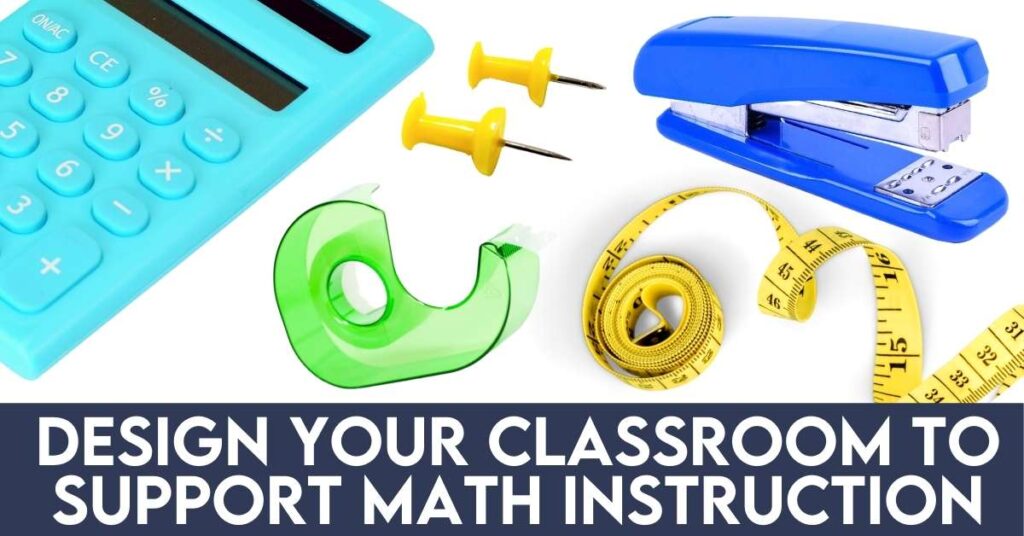
Literacy and math should be equally represented in your space. For example, if your classroom has an abundance of reference charts and tools for literacy, but only has a few math posters tacked up in the corner, you may want to consider looking at your classroom with a math lens to ensure you are fully supporting your students.
Each display, bulletin board, and area in the classroom needs to be thoughtfully planned out with students’ needs in mind. In addition, it’s important that we make tools (like elementary math posters, math tool kits, number lines and a math word wall) accessible to students.
If you are thinking, “I don’t even know what a numeracy-rich environment is! Where do I begin?” No worries! You’re in the right place!
What is a Numeracy-Rich Environment?
A numeracy-rich environment, also commonly referred to as a math-rich environment, is a space that promotes and supports mathematical thinking and processes. Similar to how a literacy-rich environment surrounds students with written words in a natural way, a numeracy-rich environment surrounds students with numbers, mathematical concepts, math tools and manipulatives, and math vocabulary.
Numeracy-Rich Environment vs Literacy-Rich Environment
A numeracy-rich environment is focused on math, while a literacy-rich environment is focused on reading and writing. Both are centered on the idea that it is important to create spaces that promote and support learning.
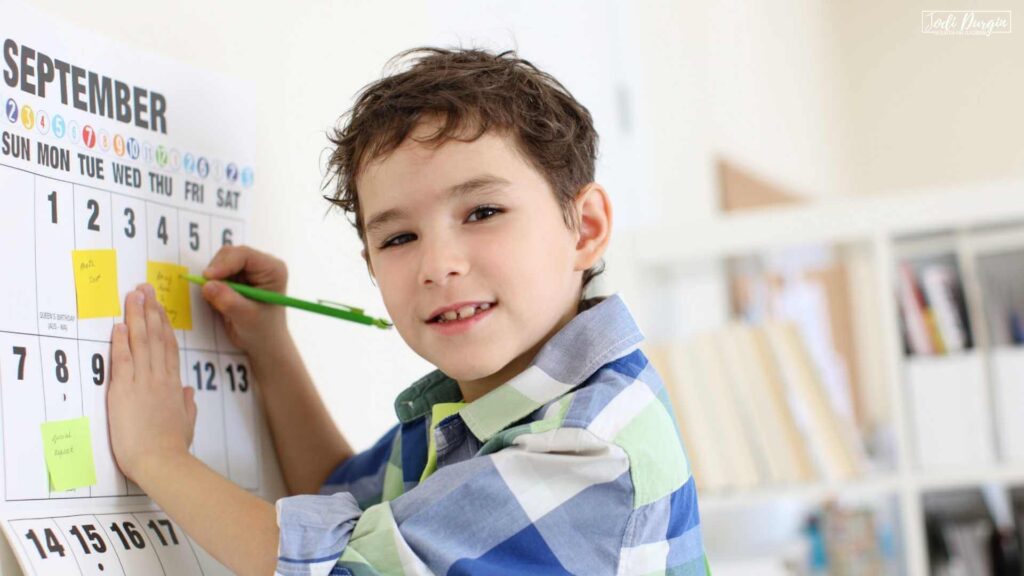
Why is a Numeracy-Rich Classroom Environment Important?
A numeracy-rich classroom environment is important because it equips students with the tools and resources they need as problem solvers and math thinkers. By being immersed in an environment that fosters a positive mindset surrounding math, students become unafraid of making mistakes and taking risks, which is essential in this content area. This translates into a higher level of confidence in math abilities and higher levels of performance.
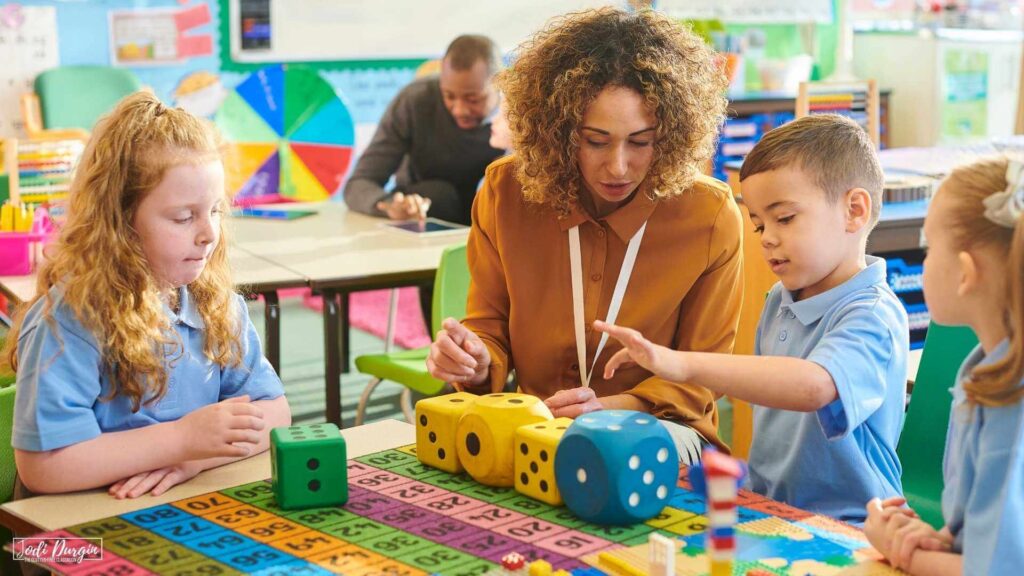
10 Easy Ways to Create a Math-Rich Environment
1. Whole Group Area
Designate a whole group area in your classroom where you will deliver whole group instruction, share and celebrate strategies, and have rich math discussions as a whole group. Consider these ideas when designing your whole group area: 1) The space is anchored by a rug, interactive board and/or white board. 2) Store teacher math manipulatives and whole group instructional tools in this area. 3) Store student math toolkits and math manipulatives close to this area so that they are easily accessible for students. These tools should be in individual tool kits or organized and labeled in some sort of storage solution. 4) Assign learning spots on the rug so students have someone to turn and talk with. This will nurture collaboration in your classroom.
2. Math Focus Wall
Create a math focus wall near your whole group instruction area. Consider including the following items on your wall: 1) math word wall, 2) anchor charts and math posters, 3) calendar, 4) posters with accountable talk stems / math thinking stems / math talk, 5) hundred-twenty chart, 5) lesson objective(s) and essential question(s).
3. Small Group Area
Design a small group instruction area. This is where you can host your guided math groups. Keep math manipulatives, instructional tools, and resources nearby. Consider keeping copies of your classroom math posters in this area so you can pull them out as needed.

4. Real World Application
Emphasize the real world application of math concepts and skills, so students begin to develop an understanding of the purpose and importance of learning math. One way to do this is through reading children’s literature that has math concepts embedded in them. Display these books in your classroom before, during, and after reading them.
5. Independent Work Space
Find options in your classroom where students can work independently to problem solve. This includes ideas like student desks and sitting on the floor with clipboards.
6. Partner Work Space
Provide areas in your classroom where students can work with partners and small groups. This could involve the way you set up student desks, offering clipboards, or small group tables.
7. Number Line
Post a number line on the walls of your classroom. Position it so students can access it. This ideally means that students can touch it, so try to keep it low.
8. Math Language
Use and encourage math language. Do this by 1) posting thinking stems and modeling using them during think alouds, 2) regularly and naturally using math vocabulary, 3) hosting number talks at least three times per week, 4) and requiring students to explain and justify their thinking.
9. Growth Mindset
Promote having a growth mindset around math. The best way to do this is to embody it yourself. In addition to that, we can be sure to celebrate strategies, different ways of thinking, and small wins. Whether students are at the concrete, pictorial, or abstract stage of understanding a concept, it is important to celebrate where students are and where they are going.
10. Math Songs
Play math songs during transition times and snack.

10 Types of Math Posters You Need in Your Elementary Classroom
1. Math Concept Reference Charts
When teaching a new math unit or topic, it is helpful to introduce reference charts that support students with making sense of their learning. Post it in a place in your classroom where students can access them with ease. You could also make copies for each student and have them keep it in their math folder or binder. Another option is to keep them in a class binder that students can reference throughout the year as needed.
2. Math Tools
Think of your classroom as a big toolbox. Within that toolbox, you’ll want to include tools for students to access to support their learning. Some examples include a class number line, hundred or hundred-twenty chart, tens frame poster, and accountable talk stems.
3. Classroom Calendar
Establishing calendar time as part of your morning routine is a great way to add in extra math practice on a daily basis. Posting this resource also supports students in identifying the date, so they can write it at the top of their papers, as well as becoming more familiar with calendar concepts.
4. Guided Math Workshop Rotation Board
If you used a math workshop with a guided math framework in your classroom, you might want to consider posting a math rotation board so students know which centers they will be working at and when. Learn how to launch guided math workshop through my math workshop course (coming soon)!
5. Math Growth Mindset Posters
Growth mindset posters are a great tool for creating a classroom community that embodies both a positive attitude toward problem solving and a growth mindset in math. Some examples of growth mindset posters include, “Struggles make me stronger!” and “Math helps me build my problem solving skills!” These could be the most influential math posters you have in your classroom. Grab a set of growth mindset posters in my Elementary Math Resource Collection!
6. Classroom Expectations
Posting classroom expectations for math time is very important at the beginning of the year. Consider generating a list with the class, posting them in an area where students can see them, and refer to them as needed. This will help your math block run smoothly!
7. Math Strategy Anchor Charts
When teaching a new strategy to students, it’s helpful to create a model of the strategy that students can refer to as they work independently or with partners to solve the same type of problems.
8. Posters of Famous Mathematicians with Quotes
This is a great way to integrate history into your math instruction and it’s also great for helping students understand that math concepts were created/discovered by real people. An example is Albert Einstein who said, “Anyone who has never made a mistake has never tried anything new”.
9. Humorous Math Classroom Posters
There are some really funny math jokes out there that your students will get a kick out of. One example is, “Why didn’t the two fours feel like dinner? Because they already eight.” When you have fun with math, your students will, too! These will likely be your students’ favorite math posters!
10. Inspirational Math Posters
Posting classroom posters with inspirational quotes like “Dreams + Work = Success!” and referring to them throughout the school year helps students internalize the ideas and feel more positively about math.
Math Resources for 1st-5th Grade Teachers
If you need printable and digital math resources for your classroom, then check out my time and money-saving math collections below!
Free Math Resources for Elementary Teachers
We hope these ideas for elementary math posters will help you create the numeracy-rich classroom of your dreams! We would love for you to try these elementary math resources with your students as well. They offer students opportunities to practice grade level concepts and skills in fun and engaging ways. You can download worksheets specific to your grade level (along with lots of other math freebies) in our free printable math resources bundle using this link: free printable math activities for elementary teachers.
Check out these other math resources!
- 1st Grade Math Resources
- 2nd Grade Math Resources
- 3rd Grade Math Resources
- 4th Grade Math Resources
- 5th Grade Math Resources


